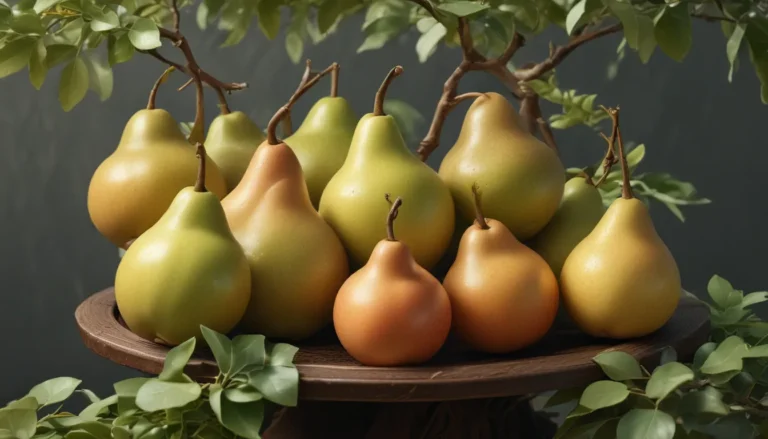Propagating Spider Plant Babies: A Comprehensive Guide to Root Spiderettes

Welcome, fellow plant enthusiasts! Today, we’re diving deep into the world of spiderettes, those adorable little plant babies that sprout from spider plants. So, put on some good music (David Bowie, anyone?) and let’s get our hands dirty with some indoor gardening fun.
But first, for those of you who are wondering what spiderettes are, they are the offsets or plant babies that grow from your spider plant. These little cuties can be propagated into new houseplants, giving you endless opportunities to expand your plant collection.
This article will guide you through three methods of propagating spiderettes, each with its own unique approach and benefits. Let’s jump right in and explore everything you need to know!
How to Propagate Spiderettes
- In Water
- In Potting Medium
- Through Layering
Before you begin, make sure you have a mature spider plant with plenty of offsets to work with or obtain spiderettes from a friend. The choice of method will determine the supplies you need, but spiderettes are the key ingredient for this project.
If you’re looking to add a new spider plant to your collection, consider starting with a variegated spider plant in a six-inch nursery pot, available from Fast Growing Trees. And if you need a refresher on spider plant care, check out our guide to growing spider plants.
1. In Water
Starting spider plants in water is not only fun but also allows you to observe the root development of your new plant. Here’s what you’ll need for this method:
- Filtered or distilled water or rainwater
- Sterilized scissors or garden pruners
- Transparent glass containers for rooting offsets
Choose containers with narrow mouths to prevent the offsets from falling in. Look for ones like the narrow test tubes in this hanging propagation station from the Mkono Store. Select spiderettes with aerial root buds already developing and place them in the containers filled with water.
Ensure the spiderettes’ leaves are above the water level to prevent them from submerging. Keep the water topped up to hydrate the roots and change it regularly to maintain cleanliness.
Position your spider babies in medium or bright indirect light and allow them to grow until they develop roots. Once the roots are long enough, you can transplant them into pots with soil or continue growing them in water for a longer period. It’s a flexible and rewarding process!
2. In Potting Medium
This method is ideal for spiderettes with aerial roots that help anchor them in the soil. Here’s what you’ll need for potting your spiderettes:
- Filtered or distilled water or rainwater in a spray bottle
- Sterilized scissors or garden snips
- Potting medium
- Small nursery pots
- A pencil or chopstick
For the potting medium, consider using De La Tank’s Houseplant soil, available in various sizes from Tank’s Green Stuff via Arbico Organics. Plant your spiderettes in the pots, keeping the soil moist and providing extra humidity if needed.
Once the spiderettes root, you can start watering them normally and care for them as you would adult plants. Repot them as they grow and thrive in their new environment.
3. Through Layering
The layering method involves allowing the spiderette to root while still attached to the parent plant before detaching it. This approach mimics the natural process of spider plants spreading through their offspring.
Here’s what you’ll need for this method:
- Spray bottle
- Small nursery pots
- Growing medium
- Small stones or floral pins
Place the spiderette’s stem across the new pot of soil, centering the offset over the pot. If the offset has roots, insert them into the soil and secure the stem with stones or floral pins.
Continue watering the baby plant daily until it roots, ensuring the soil remains moist but not waterlogged. Once the spiderette has rooted, you can detach it from the parent plant and care for it like a mature spider plant.
Conclusion
Congratulations, you are now ready to turn your spiderettes into new houseplants with these propagation methods. Whether you envision them as backup singers or simply as adorable plant babies, the choice is yours to make.
Have you tried any of these methods to propagate your spiderettes? If you encounter any challenges along the way, feel free to share in the comments, and we’ll be happy to assist you. Happy propagating!
If you’re eager to explore more plant propagation techniques, check out these articles for more exciting ideas:
- 3 Foolproof Ways to Propagate Pothos Plants (And One That Doesn’t Work)
- How to Propagate ZZ Plants from Leaf Cuttings
- How to Propagate Norfolk Island Pine
Photos by Allison Sidhu and Kristina Hicks-Hamblin Product photos via Amazon, Arbico Organics, Fast Growing Trees, the Mkono Store, and Tank’s Green Stuff.





